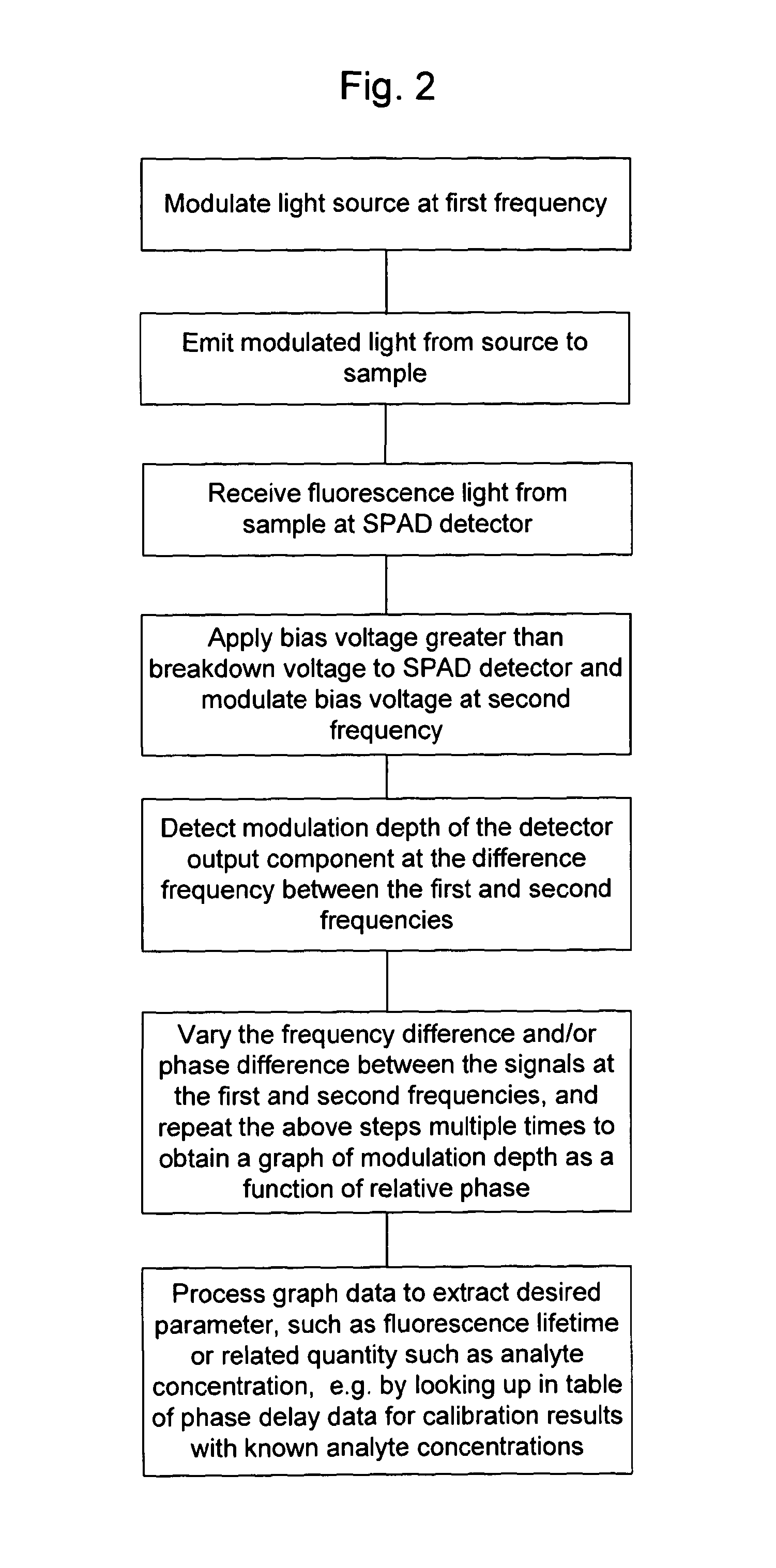Fluorescence measurement
a fluorescence measurement and sample technology, applied in the direction of instrumentation, material testing goods, component separation, etc., can solve the problems of low fluorescence intensity, short fluorescence lifetime of interest, and considerable practical difficulties, so as to achieve less noise sensitivity, less noise, and simple design
- Summary
- Abstract
- Description
- Claims
- Application Information
AI Technical Summary
Benefits of technology
Problems solved by technology
Method used
Image
Examples
Embodiment Construction
[0029]The present invention provides a sensor and measurement method for fluorescence measurements. A preferred embodiment relates to the measurement of glucose concentration, as will be described in more detail below. Firstly, the general arrangement and operation of the fluorescence sensor will be explained.
[0030]FIG. 1 shows schematically an embodiment of a fluorescence sensor according to the invention. A signal generator 10 produces a high frequency periodic signal at a first frequency that is passed to a driver 12. The driver 12 may condition the first signal and then uses it to drive modulation of a light source 14. The light source 14 generates the excitation light to be used for stimulation of the fluorescence system being investigated. The light source 14 can be, for example, an LED or laser diode. Preferably the light source 14 is temperature stabilized. The choice of output wavelength of the light source is made to suit the sample under investigation to stimulate a trans...
PUM
| Property | Measurement | Unit |
|---|---|---|
| fluorescence lifetime | aaaaa | aaaaa |
| fluorescence lifetime | aaaaa | aaaaa |
| fluorescence lifetimes | aaaaa | aaaaa |
Abstract
Description
Claims
Application Information
 Login to View More
Login to View More - R&D
- Intellectual Property
- Life Sciences
- Materials
- Tech Scout
- Unparalleled Data Quality
- Higher Quality Content
- 60% Fewer Hallucinations
Browse by: Latest US Patents, China's latest patents, Technical Efficacy Thesaurus, Application Domain, Technology Topic, Popular Technical Reports.
© 2025 PatSnap. All rights reserved.Legal|Privacy policy|Modern Slavery Act Transparency Statement|Sitemap|About US| Contact US: help@patsnap.com


